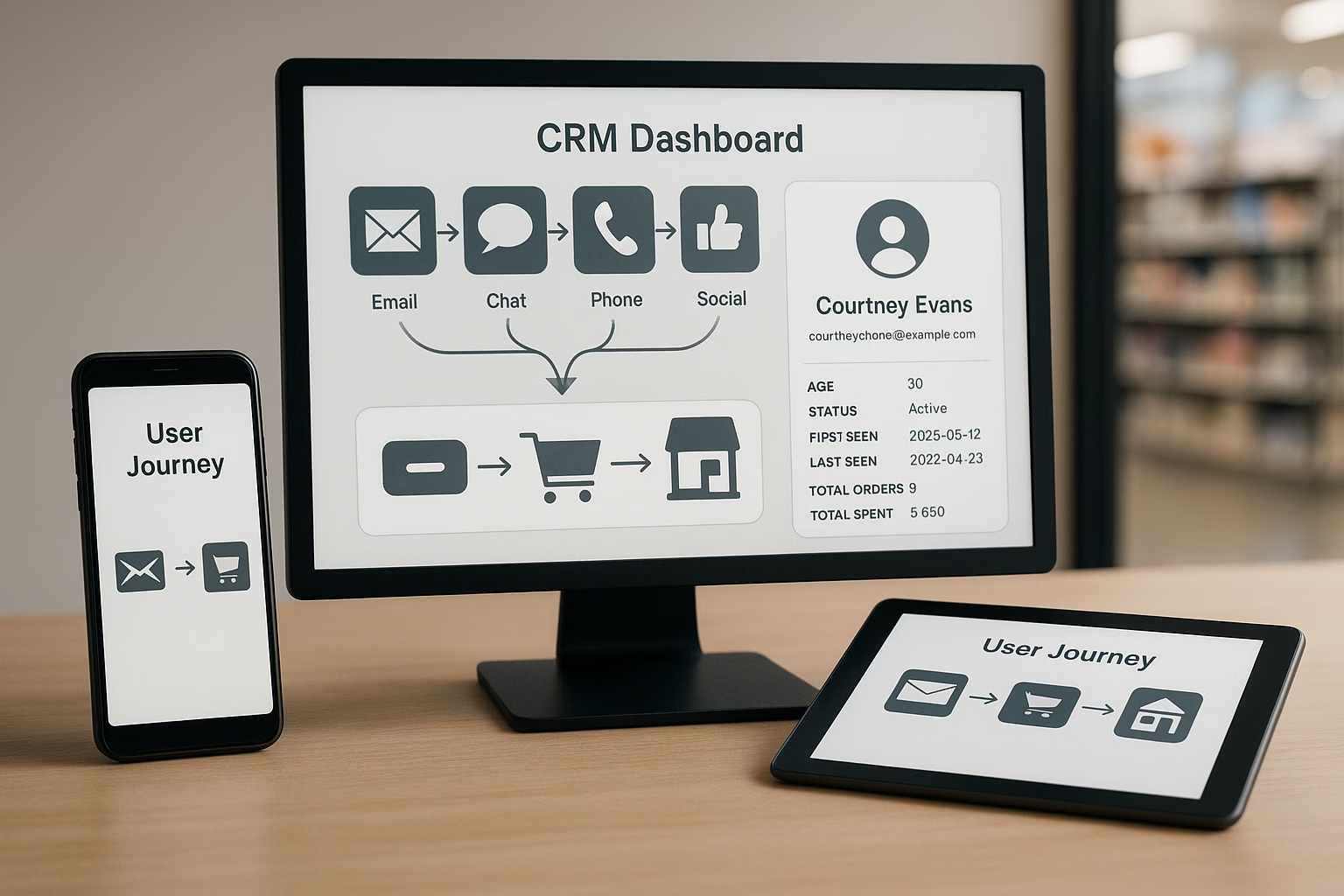By Martin H. Morrissette, Sirocco CMO – Book time with me
Data drives decision-making, fuels innovation, and underpins competitive advantage. The ability to manage this critical resource effectively has become paramount for companies. Master Data Management (MDM) stands at the forefront of this endeavour, offering a structured approach to ensuring the consistency, accuracy, and reliability of your organisation’s core data assets. However, the journey from the theoretical promise of MDM to its practical implementation is fraught with challenges. This blog explores the intricate landscape of MDM, examining both its idealised state and the realities organisations face, while providing actionable insights to bridge this gap and unlock the transformative power of master data.
The ideal state of master data management
Information is the lifeblood of any organisation. It fuels decision-making, drives business processes, and unlocks valuable insights into customer behaviour. At the heart of managing this critical resource lies Master Data Management (MDM), a crucial discipline that ensures the consistency, accuracy, and control of an organisation’s core data assets. Master Data Management is, in its theoretical form, a utopian concept where all critical data types, such as customer, product, and location information, are centrally managed. This centralisation guarantees a single version of truth across the organisation. In this ideal state, data isn’t just consistent and accurate; it is also readily available for strategic decision-making. This centralised approach empowers organisations with a comprehensive 360-degree view of their operations, leading to improved efficiency, enhanced customer service, and increased profitability.
In this perfect scenario, MDM ensures that data is not only unified but also enriched with quality, relevance, and context. The data is structured and harmonised to eliminate redundancies and inconsistencies, thus providing a reliable foundation for analytics and reporting. Organisations can leverage this single source of truth to drive business intelligence initiatives, optimise supply chain operations, and personalise customer interactions.
The reality of master data management
However, that is too often not all what we see in companies. Implementing MDM often reveals a complex landscape where organisational silos, legacy systems, and varying data standards pose significant obstacles. The ideal state of MDM, with its promise of seamless data integration and management, frequently clashes with the entrenched realities of business operations. And this, by the way, has almost nothing to do with which technology your company signed up for.
Organisational silos are a common barrier. Different departments often use disparate systems, leading to inconsistent and duplicated data. For example, marketing might maintain its own customer database that differs from the one used by sales or customer support. This fragmentation results in data inconsistencies that undermine the integrity of business insights and decision-making. Lack of data governance is another critical issue. Without a robust framework for managing data, organisations struggle to define clear ownership and accountability for data quality. Data governance involves setting policies and procedures for data stewardship, ensuring that data is accurate, accessible, and secure. In its absence, data quality deteriorates, leading to erroneous analyses and flawed business strategies. Resistance to change is a human factor that cannot be overlooked. Shifting to a centralised data management approach disrupts established workflows and necessitates a cultural shift within the organisation. Employees accustomed to their existing systems and processes may resist adopting new tools and methodologies. This resistance can significantly hamper the implementation of MDM initiatives, making it essential to manage change effectively and foster a data-driven culture.
The high cost of bad data
Understanding the importance of MDM requires recognising the significant consequences of poor data quality. According to a study by Gartner, poor data quality costs organisations an average of $15 million per year in losses. The impact of bad data extends across various dimensions of the business, creating a domino effect of problems that can cripple organisational efficiency and effectiveness.
Inefficient business processes are often the first casualty. When data is inconsistent, inaccurate, or incomplete, operational workflows become bogged down with errors and delays. For instance, an incorrect product code in the inventory system can result in shipping errors, stockouts, or overstock situations. These inefficiencies not only waste resources but also diminish customer satisfaction and trust. Marketing campaigns based on inaccurate customer information are another major pitfall. Inaccurate data can lead to misguided targeting efforts, resulting in missed opportunities and lost revenue. A marketing campaign that relies on outdated or incorrect customer profiles will fail to engage the intended audience, thereby reducing the return on investment (ROI) and potentially damaging the brand’s reputation. Poor data quality also complicates your well-intended data governance efforts. Establishing clear ownership and accountability for data integrity becomes challenging when the underlying data is flawed. Without accurate data, organisations cannot effectively monitor compliance with data governance policies, leading to increased risk of regulatory violations and associated penalties. Furthermore, the lack of reliable data impedes strategic decision-making. Business leaders like you depend on accurate and timely data to make informed decisions that drive growth and competitiveness. When data quality is compromised, decision-makers are left with an unreliable foundation, leading to suboptimal strategies and missed opportunities.
Practical steps for MDM success
Despite these challenges, bridging the gap between the theoretical and practical aspects of MDM is achievable with a structured and strategic approach. Several key steps can guide organisations toward successful MDM implementation, transforming their data management practices and unlocking the full potential of their data assets. Here are some of those steps
Establishing a robust data governance framework is the first critical step. This involves defining clear roles and responsibilities for data management, setting data standards, and implementing data quality measures. A well-structured data governance framework ensures that data is treated as a strategic asset, with dedicated stewards responsible for maintaining its accuracy and integrity. This framework should also include policies for data security and privacy, ensuring compliance with relevant regulations and protecting sensitive information.
Investing in the right technology is equally important. Choosing an MDM solution that scales with the organisation’s needs is crucial. Modern MDM tools offer advanced features such as data profiling, cleansing, and enrichment, which automate many data management tasks. These tools also provide capabilities for data integration, enabling seamless data flow across different systems and departments. By leveraging the right technology, organisations can ensure data consistency, gain valuable insights, and reduce the manual effort involved in data management.
Fostering a data-driven culture is essential for the long-term success of MDM initiatives. Encouraging employees to value data and integrate it into their daily work can be achieved through comprehensive training and communication. Demonstrating the benefits of high-quality data through real-world examples and success stories can help build buy-in and support for MDM efforts. Additionally, promoting data literacy across the organisation ensures that employees at all levels understand the importance of data quality and are equipped to contribute to its maintenance.
Measuring the success of MDM Implementation
Measuring the success of MDM implementation requires a combination of qualitative and quantitative metrics. One of the most critical measures is, obviously, data quality, which involves assessing the accuracy, completeness, consistency, and timeliness of data. High-quality data is a strong indicator of successful MDM and serves as a foundation for reliable business insights. Another important metric is the rate of data duplication. MDM aims to eliminate duplicate data and provide a single version of truth. Therefore, a decrease in data duplication rates signifies progress in MDM efforts. Regular audits and data quality assessments can help identify and address duplicate records, ensuring that the data repository remains clean and accurate.
User adoption rates are also a vital measure of MDM effectiveness. High user adoption rates indicate that the MDM system is meeting user needs and that employees understand the value of the system. User training, support, and ongoing engagement are critical to achieving high adoption rates. Collecting feedback from users can provide insights into any challenges they face and help refine the MDM system to better meet their needs. The ultimate measure of MDM success, however, is its impact on the business. This impact can be seen in improved decision-making, increased customer satisfaction, and other positive business outcomes resulting from better data management. For example, a retailer that implements MDM may see a reduction in inventory costs due to more accurate demand forecasting, or a financial institution might experience enhanced customer retention through personalised service based on accurate customer data.
Cost savings are another key indicator of MDM success. Effective MDM can reduce the time and resources spent on manual data management tasks, leading to significant cost savings. Automating data management processes not only improves efficiency but also allows staff to focus on higher-value activities. Additionally, better data quality can reduce the costs associated with correcting errors and resolving data-related issues. Compliance with data-related regulations is a critical consideration for many organisations. Successful MDM should improve compliance with these regulations, reducing the risk of violations and associated fines. Tracking regulatory compliance metrics, such as the number of data-related audits and the outcomes of these audits, can provide a clear picture of MDM’s impact on regulatory adherence.
It’s important to note that the specific metrics for MDM success may vary depending on your organisation’s goals and challenges. Defining these metrics before implementing MDM and tracking them consistently is essential for measuring the effectiveness of the strategy and identifying areas for improvement. We can help with that.
Vendor solutions for MDM
Selecting the right MDM solution can significantly impact the success of your MDM initiatives. Several leading vendors offer robust MDM solutions, each with its own set of features and benefits. Here, we explore some of these solutions and how they can support organisations in their MDM journey. We partner with many of the below.
Salesforce provides a comprehensive platform for managing customer data across the entire customer lifecycle. Data Cloud puts all of your data to work for your customers. It is deeply embedded in the Einstein 1 Platform, which means any external data lake or warehouse can now drive actions and workflows inside of your CRM. Data Cloud is about more than just bringing data together. It’s about bringing entire organisations together around the customer to improve experiences and drive growth. Via the AppExchannge, you can find other MDM solutions for Salesforce, designed to integrate data from various sources and provide a holistic view of customer profiles. We can help you find and implement a solution suited for your organisation. If you are looking to enhance your customer relationship management (CRM) capabilities and leverage data to drive marketing, sales, and service operations, book some time with us to explore your options.
Microsoft offers master data management e.g. with Azure and CluedIn. CluedIn architecture provides businesses with metrics about the quality of data it ingests, intelligently detecting dirty data and preparing it for cleaning by data engineers and data stewards. Proprietary fuzzy logic machine learning algorithms help business users and curators label data, and teach the system to identify, correct, and prevent data quality issues over time. Modern enterprise companies base many processes and projects on data, but the raw data has to be prepared for consumption. Data use cases from advanced analytics to machine learning all require similar data preparation processes and attention. We can help you asses, evaluate and set this up in your Microsoft environment.
Oracle’s Master Data Management solution provides a unified and trusted view of master data across enterprise applications, such as ERP, CRM, and PLM. Oracle’s solution helps ensure that a company’s data is accurate and governed across these critical applications, supporting complex business processes and improving decision-making. By centralising data management, Oracle’s MDM solution reduces data silos and enhances data quality, enabling organisations to streamline operations and achieve greater efficiency. This solution is particularly beneficial for large enterprises with complex data environments and stringent governance requirements.
SAP offers Master Data Governance, designed to improve the quality of business-critical information with a central hub for master data management and governance. SAP’s MDM solution ensures that businesses do not use multiple, potentially inconsistent versions of data in different parts of their operations. By providing a single source of truth, SAP’s solution enhances data consistency and supports regulatory compliance. SAP’s robust governance capabilities help organisations define data standards, enforce data quality rules, and monitor compliance, making it a valuable tool for organisations with comprehensive governance needs.
While HubSpot does not offer a traditional MDM solution, it provides a robust Customer Relationship Management (CRM) system that can help with aspects of data management. HubSpot’s CRM consolidates and manages customer data, streamlining sales processes and increasing collaboration by enabling sales, marketing, and service teams to share data and work together seamlessly. For organisations focused on improving customer engagement and sales efficiency, HubSpot’s CRM offers a practical and user-friendly solution that supports data management objectives. Ask us about our HubSpot implementation services.
Those are just a few examples of course, there are many other solutions out there. Choosing the best MDM solution for your organisation depends on your specific needs and circumstances. Factors such as the size and complexity of the data environment, regulatory requirements, and existing IT infrastructure should be considered when you evaluate different options. Thorough research and careful consideration of these factors are essential to making an informed decision that aligns with the organisation’s strategic goals. Our teams would be happy to assist you with this process.
Conclusion
Master Data Management is not merely a theoretical concept; it is a practical tool with the power to transform an organisation. Your journey to MDM success may be challenging, but with the right approach and the right partner, you too can bridge the gap between theory and reality. Sirocco is here to help you on this journey, providing expert advice and practical solutions to help you master your data. In the complex landscape of modern business, where data is both a critical asset and a potential liability, effective MDM is more important than ever. By establishing a strong data governance framework, investing in the right technology, fostering a data-driven culture, and continuously measuring and improving MDM efforts, organisations can unlock the full potential of their data assets. With the support of experienced partners like Sirocco, businesses can navigate the challenges of MDM implementation and achieve sustainable success in their data management initiatives. Master Data Management represents a significant opportunity for organisations to enhance their operational efficiency, improve customer experiences, and drive business growth. By bridging the gap between theory and reality, MDM empowers organisations to harness the power of their data, transforming it into a strategic asset that supports informed decision-making and competitive advantage. As the digital landscape continues to evolve, the importance of effective data management will only grow, making MDM an essential component of any successful business strategy.
Whether you are just beginning your MDM journey or looking to optimise your existing data management practices, Sirocco offers the expertise and solutions you need to succeed. With over 15 years of experience in helping clients with their data strategies and technology needs, we are committed to supporting your organisation in mastering your data and achieving your business objectives.










